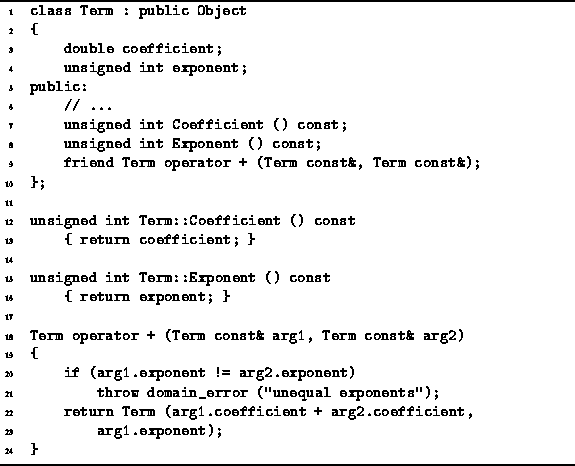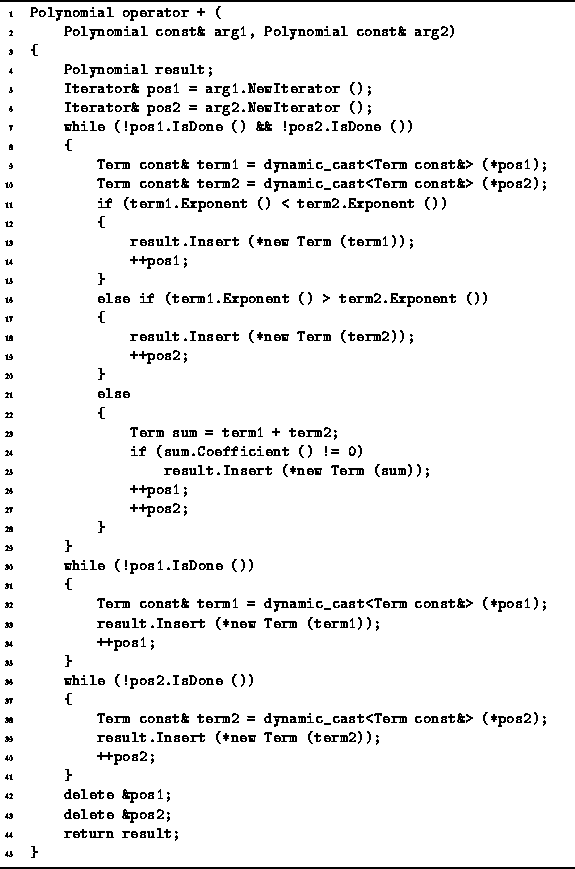To begin with, we need to represent the terms of the polynomial.
Program ![]() repeats the definition of
the Term class given in Section
repeats the definition of
the Term class given in Section ![]() .
The reason for repeating the definition here is that
some additions are needed to support the
the implementation of polynomial addition.
.
The reason for repeating the definition here is that
some additions are needed to support the
the implementation of polynomial addition.

Program: Term Class Definition
Three additional functions are declared in Program ![]() .
The first two, Coefficient and Exponent,
are simple accessor functions
which provide read-only access to the corresponding
member variables of a Term instance.
Clearly, the running time of each of these functions is O(1).
.
The first two, Coefficient and Exponent,
are simple accessor functions
which provide read-only access to the corresponding
member variables of a Term instance.
Clearly, the running time of each of these functions is O(1).
The third function overloads the addition operator, operator+. in such a way as to make it possible to add two Terms together. The result of the addition is another Term. The working assumption is that the terms to be added have identical exponents. If the exponents are allowed to differ, the result of of the addition is a polynomial which cannot be represented using a single term! To add terms with like exponents, we simply need to add their respective coefficients. Therefore, the running time of the Term addition operator is O(1).
We now turn to the polynomial itself.
Program ![]() declares the Polynomial class.
We have chosen in this implementation to use
the pointer-based sorted list implementation
to represent the sequence of terms.
Therefore, the Polynomial class
is derived from the SortedListAsLinkedList class.
declares the Polynomial class.
We have chosen in this implementation to use
the pointer-based sorted list implementation
to represent the sequence of terms.
Therefore, the Polynomial class
is derived from the SortedListAsLinkedList class.

Program: Polynomial Class Definition
Only one additional function is declared in Program ![]() .
Specifically, the addition operator, operator+,
has been overloaded to make it possible to add two Polynomials
to obtain a third.
Program
.
Specifically, the addition operator, operator+,
has been overloaded to make it possible to add two Polynomials
to obtain a third.
Program ![]() gives the implementation for this operator.
gives the implementation for this operator.

Program: Polynomial Addition Operator Definition